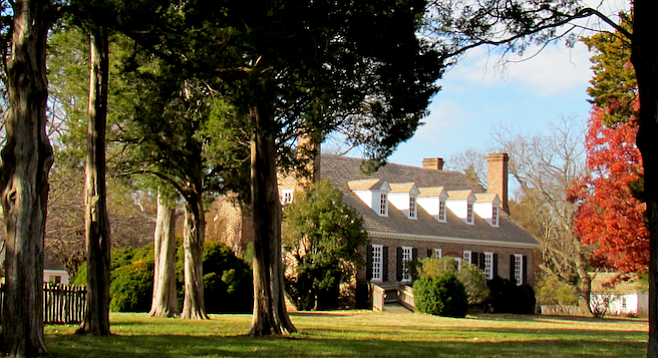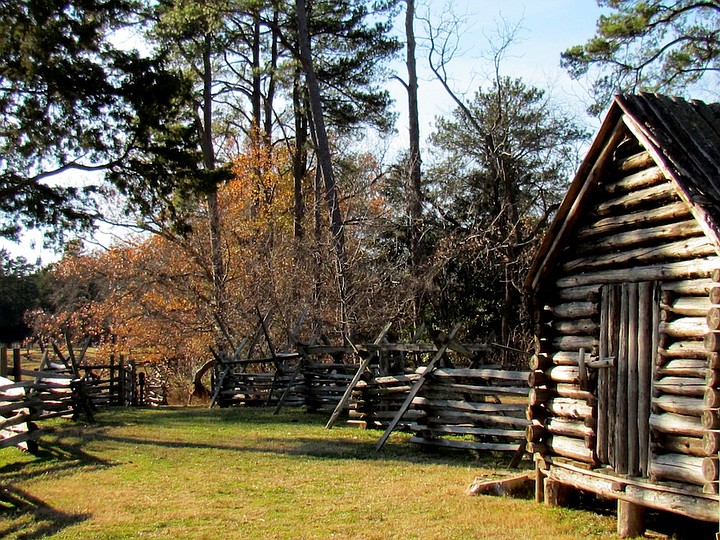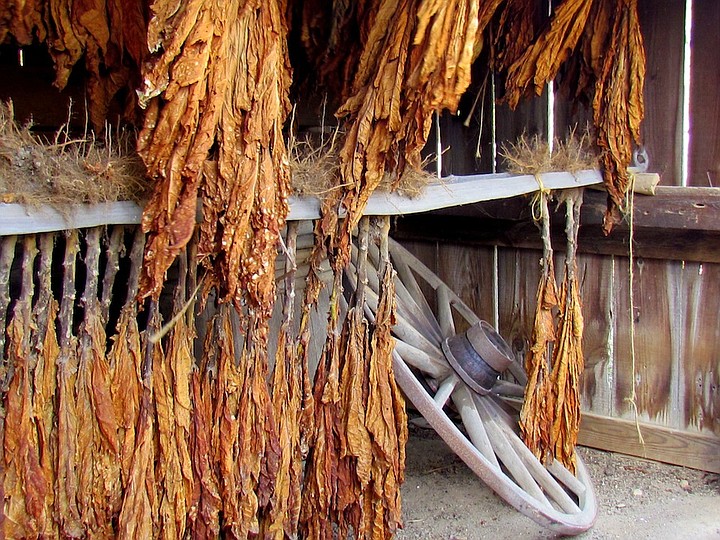 Facebook
Facebook
 X
X
 Instagram
Instagram
 TikTok
TikTok
 Youtube
Youtube

"George Washington slept here!" And he did, too. Truth be told, he slept there as well. And there. What can I say? The man got around. With four family homes, you’d expect as much. He was partial to the spirits, too, but I’ll get to that.
Mount Vernon, 15 miles south of Washington, D.C., is perhaps the most known of his homes. It also happens to be the most popular historic estate in America, drawing over a million visitors annually.
Although the original 18th-century estate totaled 8,000 acres, about 500 acres are preserved today. Aside from the mansion and gardens, Pioneer Farm – modeling some of the progressive farming practices Washington tested and implemented, such as his 16-sided treading barn, along with his cutting-edge gristmill and highly lucrative distillery – can also be toured at Mount Vernon.
Always the entrepreneur, Washington had been urged by his farm manager, Scotsman James Anderson, to enter the whiskey business. Though skeptical at first, by the time of his death in 1799, his distillery was the country’s largest producer of liquid gold. The George Washington Distillery now serves as the gateway to the American Whiskey Trail.

However, though George died at Mount Vernon and is buried there, that’s not where he was born. About an hour and a half south of D.C. is the George Washington Birthplace National Monument.
Situated along the Potomac River, Popes Creek Plantation was home for wee Georgie in his early years. Walking the trails along the river and through the woods, it's easy to imagine the toddler taking his first steps, cooing at the ducks and geese floating on the river, and squealing at the pigs left to free range throughout the woods. It's a simple but beautiful natural place – as in unmanicured. It was here that Washington learned the basics of environmental stewardship.
Consisting of 367 acres that had been part of the ancestral home of the Washington's since 1657, the national monument includes the burial site of five generations of Washington's, as well as colonial replica structures. Unfortunately, the house our first president was born in burned in 1779.

The George Washington Birthplace National Monument is a living colonial farm complete with costumed interpreters and demonstrations. With picturesque trails meandering along the river, a colonial homestead and garden, a petting zoo with heritage livestock, a weaving shed, smithy, tobacco fields and drying barns, this park offers a great family off-the-beaten-path experience. It's quiet, comparatively speaking, with really lovely scenery – a perfect place for a picnic hike. (Or so I decided with my five grandkids in tow, like ducklings in a row, singing a much altered version of Yankee Doodle Dandy.) Interpretive signage throughout the woods and marshlands allowed my family to reenact things that young George had done, literally walking in his footsteps.
Unlike my wee ones, George was born into the tidewater land-owning aristocracy. Besides Mount Vernon and Pope’s Creek, he also lived at a few other properties, including the family's Ferry Farm across the Rappahannock River from colonial Fredericksburg and Bush Hill Plantation on Barbados.
Well, aside from the White House that is.
Unless you're absolutely NEEDING to deal with D.C. metro traffic, I'd recommend staying in Fredericksburg instead. Fly into Richmond, rent a car, and drive north a half hour. The elegant Kenmore Inn, chock full of colonial antiques, is a historic hotel and tavern linked to George's only sister, Betty. Once the largest motor lodge on the Eastern shoreboard, the Victorian Inn at the Olde Silk Mill employed hundreds of women to spin Italian silk during the 1880s.
Though there are many authentic taverns and Irish pubs in the downtown district, why limit yourself to ale when you can truly get into the pioneer spirit (forgive the pun) at the A. Smith Bowman Distillery? Take a tour and sample their copper-stilled whiskey. They also brew vodka and gin.
A local favorite is French restaurant La Petite Auberge, though the Bavarian in the old train depot is also popular, often with lines out the door.
There's a plethora of colonial plantations in the vicinity, and certainly all along the James River, if you want to stick to the theme. Also, just a few hours south is horse n' buggy cobblestoned Colonial Williamsburg and the living museum at Jamestowne.


"George Washington slept here!" And he did, too. Truth be told, he slept there as well. And there. What can I say? The man got around. With four family homes, you’d expect as much. He was partial to the spirits, too, but I’ll get to that.
Mount Vernon, 15 miles south of Washington, D.C., is perhaps the most known of his homes. It also happens to be the most popular historic estate in America, drawing over a million visitors annually.
Although the original 18th-century estate totaled 8,000 acres, about 500 acres are preserved today. Aside from the mansion and gardens, Pioneer Farm – modeling some of the progressive farming practices Washington tested and implemented, such as his 16-sided treading barn, along with his cutting-edge gristmill and highly lucrative distillery – can also be toured at Mount Vernon.
Always the entrepreneur, Washington had been urged by his farm manager, Scotsman James Anderson, to enter the whiskey business. Though skeptical at first, by the time of his death in 1799, his distillery was the country’s largest producer of liquid gold. The George Washington Distillery now serves as the gateway to the American Whiskey Trail.

However, though George died at Mount Vernon and is buried there, that’s not where he was born. About an hour and a half south of D.C. is the George Washington Birthplace National Monument.
Situated along the Potomac River, Popes Creek Plantation was home for wee Georgie in his early years. Walking the trails along the river and through the woods, it's easy to imagine the toddler taking his first steps, cooing at the ducks and geese floating on the river, and squealing at the pigs left to free range throughout the woods. It's a simple but beautiful natural place – as in unmanicured. It was here that Washington learned the basics of environmental stewardship.
Consisting of 367 acres that had been part of the ancestral home of the Washington's since 1657, the national monument includes the burial site of five generations of Washington's, as well as colonial replica structures. Unfortunately, the house our first president was born in burned in 1779.

The George Washington Birthplace National Monument is a living colonial farm complete with costumed interpreters and demonstrations. With picturesque trails meandering along the river, a colonial homestead and garden, a petting zoo with heritage livestock, a weaving shed, smithy, tobacco fields and drying barns, this park offers a great family off-the-beaten-path experience. It's quiet, comparatively speaking, with really lovely scenery – a perfect place for a picnic hike. (Or so I decided with my five grandkids in tow, like ducklings in a row, singing a much altered version of Yankee Doodle Dandy.) Interpretive signage throughout the woods and marshlands allowed my family to reenact things that young George had done, literally walking in his footsteps.
Unlike my wee ones, George was born into the tidewater land-owning aristocracy. Besides Mount Vernon and Pope’s Creek, he also lived at a few other properties, including the family's Ferry Farm across the Rappahannock River from colonial Fredericksburg and Bush Hill Plantation on Barbados.
Well, aside from the White House that is.
Unless you're absolutely NEEDING to deal with D.C. metro traffic, I'd recommend staying in Fredericksburg instead. Fly into Richmond, rent a car, and drive north a half hour. The elegant Kenmore Inn, chock full of colonial antiques, is a historic hotel and tavern linked to George's only sister, Betty. Once the largest motor lodge on the Eastern shoreboard, the Victorian Inn at the Olde Silk Mill employed hundreds of women to spin Italian silk during the 1880s.
Though there are many authentic taverns and Irish pubs in the downtown district, why limit yourself to ale when you can truly get into the pioneer spirit (forgive the pun) at the A. Smith Bowman Distillery? Take a tour and sample their copper-stilled whiskey. They also brew vodka and gin.
A local favorite is French restaurant La Petite Auberge, though the Bavarian in the old train depot is also popular, often with lines out the door.
There's a plethora of colonial plantations in the vicinity, and certainly all along the James River, if you want to stick to the theme. Also, just a few hours south is horse n' buggy cobblestoned Colonial Williamsburg and the living museum at Jamestowne.
Comments